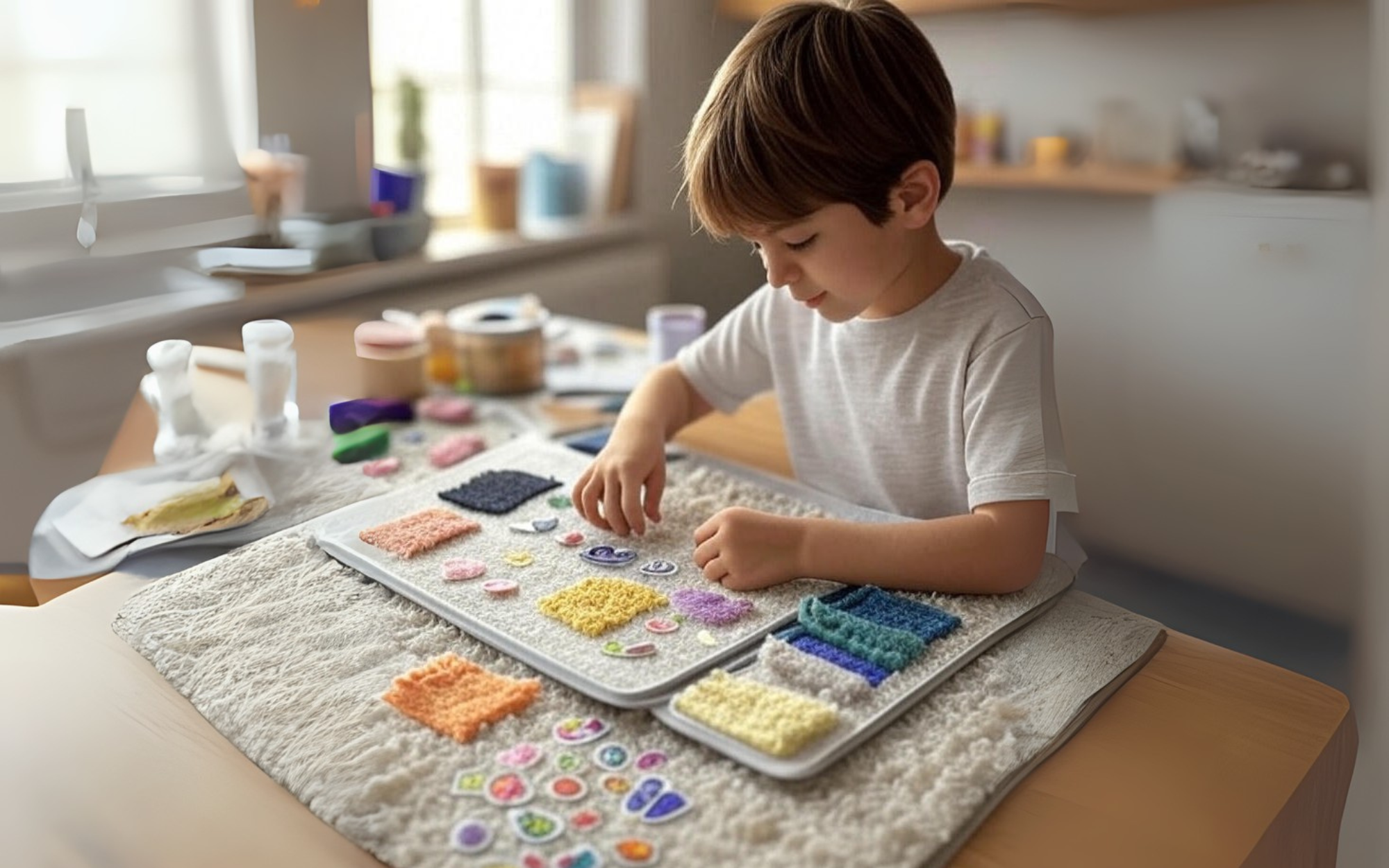Creating a calming and engaging environment is essential for children with autism, especially those receiving ABA therapy or other autism behavior support services. One fun and practical way to encourage creativity while supporting sensory needs is through a hands-on craft like DIY Sensory Notebook Covers.
This craft is not only enjoyable but also provides a sense of ownership and comfort—two important elements in a therapeutic or learning setting.
Why DIY Sensory Crafts Matter in Autism Support
Many children with autism experience sensory sensitivities, particularly to textures and tactile input. Incorporating sensory activities into their daily routines can help with emotional regulation, focus, and stress reduction. Activities like making sensory notebook covers can complement ABA therapy strategies by promoting independence and self-expression.
Whether used at school, during ABA services, or at home, these personalized notebooks become more than just a place to write—they become a soothing tool and creative outlet.
Materials You’ll Need
To create your own sensory notebook covers, gather the following items:
- A standard notebook (spiral-bound or composition book)
- Fabric swatches (fleece, felt, velvet, corduroy, etc.)
- Puffy paint or textured paint
- Stickers and foam shapes
- Soft foam sheets
- Glue or double-sided tape
- Scissors
- Any additional sensory-friendly materials (e.g., sequins, faux fur, bubble wrap)
How-To: Step-by-Step Instructions
Step 1: Prepare the Notebook
Start with a clean notebook cover. If needed, wipe it down or cover it with a blank sheet of paper as a base.
Step 2: Choose Your Sensory Elements
Let the child select textures and materials that feel comforting or interesting to them. This autonomy promotes personal ownership, which is often emphasized in ABA therapy.
Step 3: Decorate with Purpose
Glue fabric swatches in patches, lines, or fun shapes. Add soft foam, stickers, and puffy paint to create raised textures. Encourage creativity—there’s no wrong way to design their calming cover.
Step 4: Let It Dry
If you’re using glue or paint, allow the notebook to dry completely before handling it again.
Step 5: Use and Reuse
The notebook can be used for journaling, drawing, homework, or even as part of ABA therapy sessions for goal tracking or reinforcement schedules.
Sensory Benefits of This Craft
This DIY activity supports several key sensory needs:
- Touch stimulation: Kids interact with multiple textures, supporting tactile exploration.
- Calming effect: Soft, familiar materials can reduce anxiety or overstimulation.
- Self-regulation: Having a comforting item on hand can help kids ground themselves during stressful moments.
- Creative expression: Promotes independence and self-confidence through design choices.
In many autism behavior support programs, incorporating such personalized sensory items can enhance emotional well-being and help children feel more in control of their environments.
Integrating with ABA Therapy
This craft can be a valuable addition to home-based or center-based ABA services. Therapists and parents can use sensory notebook covers as:
- A reward for task completion
- A calming tool during transitions
- A visual schedule holder or communication book
- A journaling space for emotions and reflections
With ABA therapy focused on individualized goals and behavior support, small DIY projects like this offer real benefits by aligning fun with function.
Making DIY Sensory Notebook Covers is more than a craft—it’s a therapeutic activity that supports the sensory, emotional, and creative needs of children with autism. By offering children the opportunity to design something personal and soothing, we help foster self-regulation, independence, and joy.
Looking for more back-to-school sensory crafts? Be sure to checkout our blogs like making Velcro Task Boards, Alphabet Sensory Bins and Sensory Pencil Toppers.


